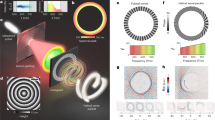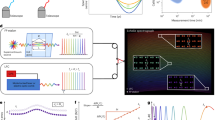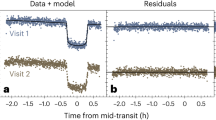Abstract
INTEREST in spectrophotography of meteors has been fast increasing in recent times1. About 500 meteor spectra2 became available from different countries by 1962. This communication describes the second meteor spectrum from India taken at Waltair at 03 h, 24 min I.S.T, on the night of November 18–19, 1963. Its visual magnitude has been estimated about zero. From the plot of its path on a star map it was found to proceed from the Taurid radiant. The spectrum of this meteor has been photographed on an Ilford ‘HP3’ film (400 ASA) using a conventional meteor spectrograph with the rotating shutter arrangement. The Contax 35-mm camera used for this purpose carried before its lens (ƒ = 50 mm) a Bausch and Lomb plane replica transmission grating with 200 lines/mm and blazed for 5000 Å. From the duration of the segments produced by the rotating shutter and the plot of the meteor on the star chart, the velocity of the meteor has roughly been estimated at 30 km/sec, which is in close agreement with the mean velocity for the Taurid shower. This appears to be the second best Taurid spectrum in the world, the first one being that secured by Ridley3. Dr. Millman mentions (private communication) that there are very few Taurid spectra available in the world.
Similar content being viewed by others
Article PDF
References
Halliday, Ian, J. Roy. Astro. Soc. Canad., 52, 169 (1958).
Millman, P. M., Bull. Radio Elec. Eng. Div., Nat. Res. Coun. Canada, 12, No. 2, 1 (1962).
Ridley, H. B., J. Brit. Astro. Assoc., 67, 298 (1957).
Millman, P. M., Proc. Symp. Astronomy and Physics of Meteors held at Smithsonian Astrophysical Observatory, Cambridge, Mass., Aug. 28–Sept. 1, 119 (1961).
Millman, P. M., paper presented at eighty-first meeting, Amer. Astro. Soc., Ottawa, June 19–23 (1949).
Cook, A. F., Spec. Supp., J. Atmos. Terr. Phys., 2, 8 (1955).
Author information
Authors and Affiliations
Rights and permissions
About this article
Cite this article
RAO, M., RAMESH, P. A Typical Taurid Meteor Spectrum. Nature 205, 164 (1965). https://doi.org/10.1038/205164a0
Published:
Issue date:
DOI: https://doi.org/10.1038/205164a0



